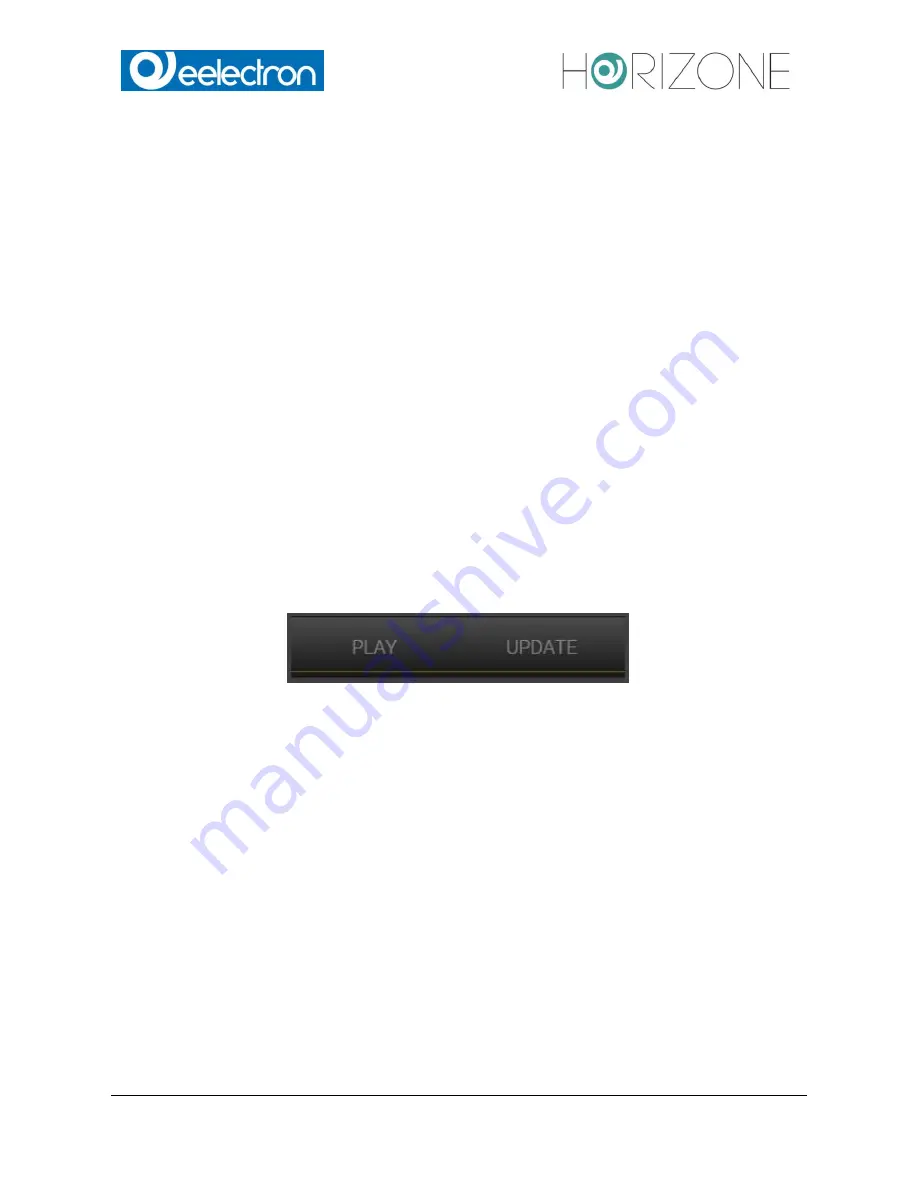
Eelectron Spa
IN00B02WEBFI00070102_ADMIN_MANUAL_EN.DOCX
65/113
KNX SCENARIOS
Objects of type 1 byte during the ETS import can be defined as KNX scenarios. With these objects
no status feedbacks or single commands are transferred, but a number, usually between 1 and 64,
which tells the installed devices the KNX scene they should load from their memory; all states
saved for the loaded scene will be set from the device. Some KNX devices can save various states
for such a KNX scenario. Depending from the value they receive on the group address of the
scenario, they can launch different actions and set different states of functions.
A KNX object can be defined as KNX scenario as follows:
Open the BACK END menu and open the desired object (1 byte) in a new tab.
Activate the EXPERT mode.
Ensure, that the “ETS ENCODING” is set to “Scaling - 0-100% (1 byte)”.
Configure the parameter “FUNCTION“ to “SCENARIOS“. If this entry should not be available, change
the “ETS ENCODING” to another value and then back to “Scaling - 0-100% (1 byte)”.
Select an appropriate icon.
Set the value for the scenario to send on the bus when it is activated in the input field “VALUE KNX
SCENARIO“.
Once a KNX scenario is configured it will appear in the FRONT END as shown below:
By clicking the PLAY button,
the value configured for the parameter “VALUE KNX SCENARIO” will
be sent to the KNX bus and the KNX devices configured for the usage of the KNX scenario will
start the actions memorized for the received number.
By clicking on the UPDATE button, an “UPDATE KNX SCENARIO” command will be sent to the
KNX bus and the KNX devices configured for the usage of the KNX scenario will memorize the
update real-time status of all KNX objects associated to the KNX scenario.
















































